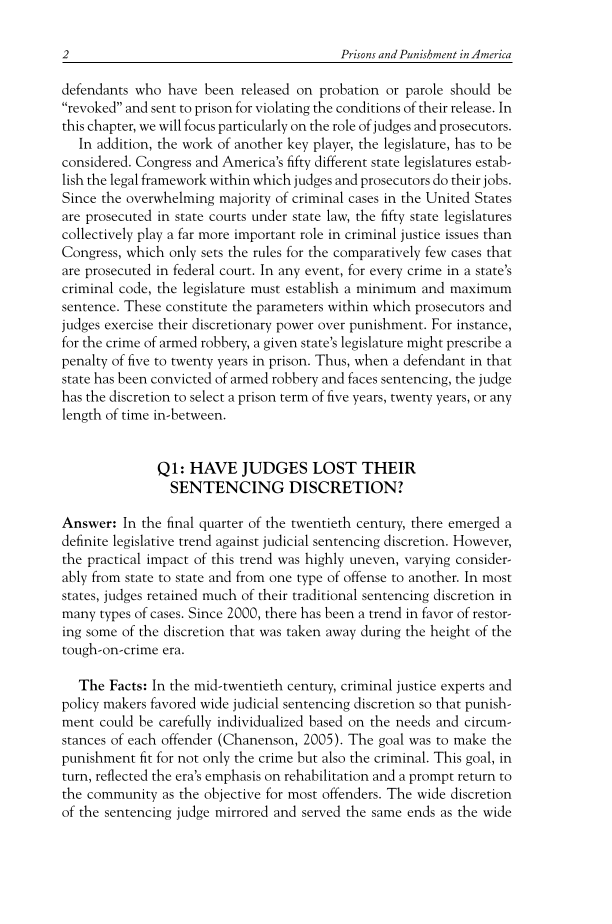2 Prisons and Punishment in America defendants who have been released on probation or parole should be “revoked” and sent to prison for violating the conditions of their release. In this chapter, we will focus particularly on the role of judges and prosecutors. In addition, the work of another key player, the legislature, has to be considered. Congress and America’s fi fty different state legislatures estab- lish the legal framework within which judges and prosecutors do their jobs. Since the overwhelming majority of criminal cases in the United States are prosecuted in state courts under state law, the fi fty state legislatures collectively play a far more important role in criminal justice issues than Congress, which only sets the rules for the comparatively few cases that are prosecuted in federal court. In any event, for every crime in a state’s criminal code, the legislature must establish a minimum and maximum sentence. These constitute the parameters within which prosecutors and judges exercise their discretionary power over punishment. For instance, for the crime of armed robbery, a given state’s legislature might prescribe a penalty of fi ve to twenty years in prison. Thus, when a defendant in that state has been convicted of armed robbery and faces sentencing, the judge has the discretion to select a prison term of fi ve years, twenty years, or any length of time in-between. Q1: HAVE JUDGES LOST THEIR SENTENCING DISCRETION? Answer: In the fi nal quarter of the twentieth century, there emerged a defi nite legislative trend against judicial sentencing discretion. However, the practical impact of this trend was highly uneven, varying consider- ably from state to state and from one type of offense to another. In most states, judges retained much of their traditional sentencing discretion in many types of cases. Since 2000, there has been a trend in favor of restor- ing some of the discretion that was taken away during the height of the tough-on-crime era. The Facts: In the mid-twentieth century, criminal justice experts and policy makers favored wide judicial sentencing discretion so that punish- ment could be carefully individualized based on the needs and circum- stances of each offender (Chanenson, 2005). The goal was to make the punishment fi t for not only the crime but also the criminal. This goal, in turn, refl ected the era’s emphasis on rehabilitation and a prompt return to the community as the objective for most offenders. The wide discretion of the sentencing judge mirrored and served the same ends as the wide
Document Details My Account Print multiple pages
Print
You have printed 0 times in the last 24 hours.
Your print count will reset on at .
You may print 0 more time(s) before then.
You may print a maximum of 0 pages at a time.






























































































































































































































































